Best telescopes for beginners 2024: Great scopes for starting out
The best telescopes for beginners are easy to use and affordable — making themperfect for new astronomers. We've rounded up our favorites.
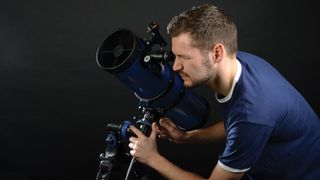
1. The list in brief ↴
2. Best overall
3. Best for quick setup
4. Best for basic astrophotography
5. Best Maksutov-Cassegrain
6. Best for backyard
7. Best for wide-field observation
8. Best computerized telescope
9. Best grab-and-go telescope
10. Best budget telescope
11. Best beginner telescopes FAQ
12. How we test
There are so many telescopes to choose from — across all price points and with different features — that it can feel a bit daunting picking your first, but you've come to the right place if you're looking for one of the best telescopes for beginners.
Our guide to the best starter telescope covers a range of products that range from conventional designs to newer electronic GoTo models and across all price ranges and ages, whether you're looking for a telescope for yourself or for all the family to use. We'd also recommend checking out our guide to the best telescopes for kids if you're looking specifically for a telescope for your little one. Indeed, the telescopes we've included in this guide differ in how advanced they are, but we feel that overall they incorporate functions that make them a good choice if you're just starting out.
Every entry in our roundup includes a summary of the main features as well as a few reasons we think the telescope is a great choice, alongside a handful of reasons you may want to consider other options. We've also pulled in the best current prices you can get to make it that much easier to choose the best telescope for you.
For a broader look at what's out there, check out our guide on the best telescopes for all experience levels — including options for more advanced users across all price points.
The quick list
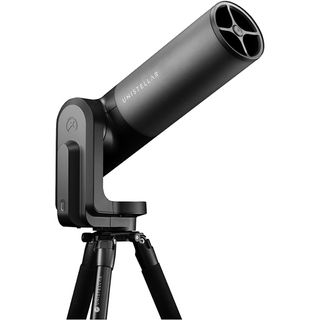
Best overall
No astronomy experience needed here, this smart telescope can do it all — but be prepared to pay for it.
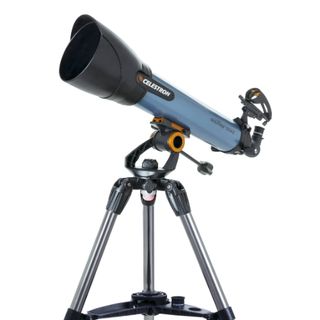
Best for quick setup
An easy, affordable option for views of all types of celestial objects, and good for basic astrophotography.
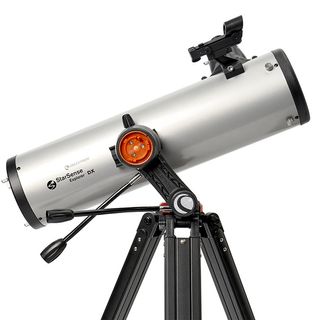
Best for basic astrophotography
As an introduction to astrophotography, this is a great option — but it isn't suitable for long exposure tracked photography.
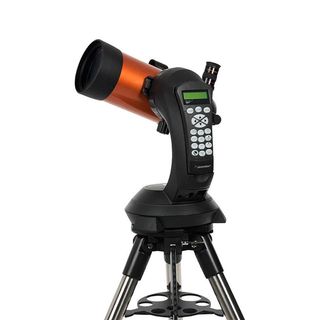
Best Maksutov-Cassegrain
Easy to use with bright optics, although it's not the most portable option. Provides a stress-free setup and good views of deep sky objects.
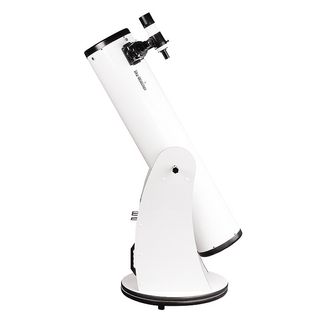
Best for the backyard
Built to last, this telescope will have you stargazing for years to come. It's heavy, so it's not one to travel with, but you'll be able to pick out faint galaxies and nebulas with ease.
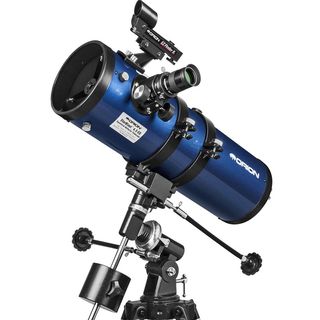
Best for wide-field observation
The EQ mount does take some getting used to for beginners, but it's a brilliant all-rounder that offers outstanding value for an extensive piece of equipment.
Load the next 3 products ↴
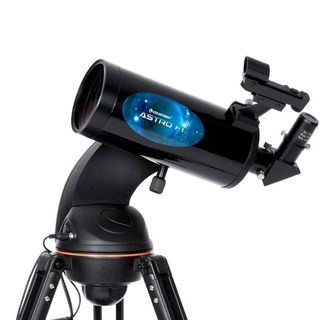
Best computerized telescope
The motorized mount can initially be tricky to set up for beginners, but it comes at a reasonable price for a decent night sky view.
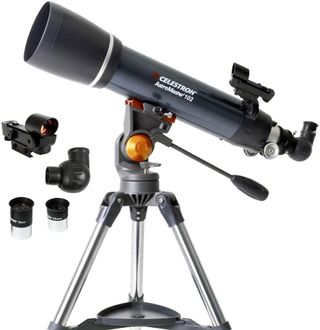
Best grab-and-go telescope
A great telescope that's perfect for beginners. It's easy to set up and use without any distracting bits of tech.
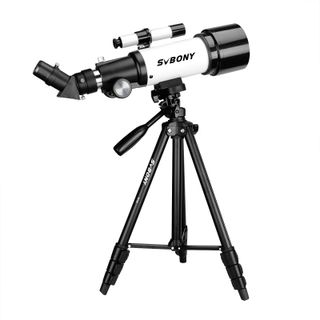
Best budget telescope
A decent budget telescope that's good for viewing the moon, but not a whole lot else. Keep an eye on the price as it often fluctuates.

Gemma currently works for the European Space Agency on content, communications and outreach, and was formerly the content director of Space.com, Live Science, science and space magazines How It Works and All About Space, history magazines All About History and History of War as well as Science, Technology, Engineering, Arts and Mathematics (STEAM) kids education brand Future Genius. She is the author of several books including "Quantum Physics in Minutes", "Haynes Owners’ Workshop Manual to the Large Hadron Collider" and "Haynes Owners’ Workshop Manual to the Milky Way". She holds a degree in physical sciences, a Master’s in astrophysics and a PhD in computational astrophysics. She was elected as a fellow of the Royal Astronomical Society in 2011.
Best telescopes for beginners 2024
Why you can trust Space.com
Best overall




Specifications
Reasons to buy
Reasons to avoid
✅ You want to invest on something that's going to last: This telescope caters to both beginners who have no prior knowledge of the night sky, and pros who have a lot of astronomy experience, so you're unlikely to outgrow it.
❌ You don't have a big budget: Although it is worth the money, this telescope is incredibly expensive, so most beginners likely wouldn't be able to afford it.
❌ You want a 'traditional' telescope: This is very much a telescope for the tech lovers, so if you want a more traditional instrument, this may not be the one for you.
🔎 Unistellar eQuinox 2 A very impressive smart telescope that can do it all, it's incredibly easy to use and guides you around the night sky even if you have no prior astronomy knowledge, though the image resolution is average. ★★★★½
Unistellar has made the best telescope for beginners overall with its smart eQuinox 2 — which is a modern take on a classic design. This is really easy to use thanks to its one-button operation, and you can even connect it to the Unistellar app on your smartphone.
Doing this lets you activate "explore mode" which uses the time and location of your telescope to automatically find celestial objects in the night sky. You can also manually adjust the telescope to direct it to an object you had in mind. This is alongside the bonus of taking astrophotos.
During our Unistellar eQuinox 2 review we were particularly impressed with the Smart Light Pollution Reduction feature, which makes the telescope more usable in densely populated areas by digitally removing city glow from the images of the night sky.
The eQuinox 2 is perfect for beginners because it gets rid of all the difficulties of setting up a regular telescope. It's all about the fun of discovering the night sky, which is what really hooks newcomers into the hobby. If you prefer a more traditional stargazing experience, you might want to choose something else. But if you can handle a smartphone, the Unistellar eQuinox 2 is incredibly easy to use, almost unmatched in simplicity.
This is, however, an expensive telescope, which may be prohibitive to some beginners. But advanced technology always comes with a higher cost. This is an extremely well-made telescope that will last for years and is just as much enjoyed by experienced users as it is by new astronomers.
- Read our full Unistellar eQuinox 2 review
| Attributes | Notes |
|---|---|
| Design | Sleek, simple design. |
| Performance | Incredibly easy to use, but image resolution is average. |
| Functionality | Backpack needed to travel with easily. |
Best for quick set up







Specifications
Reasons to buy
Reasons to avoid
✅ You want a hassle-free setup: Our top pick in this category, this telescope assembles and packs down very quickly and easily.
✅ You want to do basic astrophotography: There's a clever dust cap that doubles as a smartphone holder, so you can easily take photos with your phone.
❌ You want something super portable: It's not a heavy telescope by any means, but it does have a fairly large footprint. You could take it to dark sky locations in your car, but you might not want to carry it too far.
🔎 Celestron Inspire 100AZ Aimed at beginners and users looking to upgrade, this telescope is at its best when viewing the moon and planets and comes with a lens cap that doubles as a smartphone holder for easy astrophotography. ★★★★
Celestron's Inspired series of telescopes offers a number of great options, and among them are the Celestron Inspire 70AZ (which has a focal ration of f/11) and the Inspire 80AZ (and its focal ratio of f/11.3). But our pick is the Celestron Inspire 100AZ — which has the biggest aperture and a focal ratio of f/6.6, letting more light in and offering the brightest views in this range.
But above everything else, it's really easy to set up and a great choice for anyone starting out. It also comes packaged with various accessories so you can set it up and use it straight out of the box without too much hassle or stress figuring out how everything works — letting you see objects in the night sky much quicker.
While it is suitable for beginners, it isn't a perfect telescope. During our Celestron Inspire 100AZ review, we did detect some false color (which we'd expect at this price) and some blurring in the field of view. However, the latter is easily resolved with a careful selection of one of the best eyepieces.
The Inspire 100AZ comes with several accessories, including two eyepieces (20mm and 10mm), a red LED flashlight for low-light visibility without disrupting night vision, an accessory tray for gear storage, a StarPointer Pro finderscope for locating celestial objects and a smartphone adapter for basic astrophotography. This telescope is very versatile and suitable for various subjects in both daytime (terrestrial) and nighttime (celestial) viewing.
Unlike other beginner telescopes that have delicate optical finders limited to locating only the brightest stars, the Celestron Inspire 100AZ telescope's StarPointer Pro presents a notable advancement. With improved accuracy and dependability, it makes navigation easier for beginners. The StarPointer's impressive capability to identify faint stars, even in moderately light-polluted areas, enhances the overall stargazing experience.
- Read our full Celestron Inspire 100AZ review
| Attributes | Notes |
|---|---|
| Design | Comes with a lens cap that doubles as a phone holder. |
| Performance | Excels with lunar views. |
| Functionality | Easy to assemble and take down. |
Best for basic astrophotography
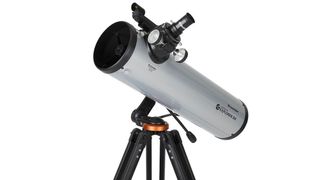
Specifications
Reasons to buy
Reasons to avoid
✅ You want to do basic astrophotography: This telescope offers great views for anyone wanting an intro to basic astrophotography, but for any real long-exposure shooting it would be impossible.
✅ You want it to offer target suggestions: The StarSense app will display a simulated view of the night sky where you can select a range of options to view from the menus.
❌ You want good eyepieces: We noted that the included 10mm eyepiece, in particular, is lacking in quality, so either choose a different model or invest in better eyepieces.
❌ You're a seasoned astrophotographer: As it doesn't have an EQ mount, long exposure photography will be near impossible.
🔎 Celestron StarSense Explorer DX 130AZ An exquisite telescope for a beginner, fully equipped and supplied with everything the skywatcher needs for a successful observing session under the stars ★★★★
Using a smartphone has made life a lot easier when it comes to interacting with other technologies, including telescopes, and Celestron has embodied that in its StarSense telescopes. An easy-to-use design and straightforward app makes the Celestron StarSense Explorer DX 130AZ a great telescope for beginners, with GPS also making it a great option.
Beginners will definitely value the telescope's ability to let you stargaze without needing much high-level configuration. While using most GoTo telescopes means pointing the telescope toward a few bright stars so the computer can determine where it is, Celestron automatically takes care of the calibrations and alignments within minutes — making it much easier on you. This lets you explore the starry night sky without much hassle; it's an ideal feature for newcomers.
When you download the StarSense app, you'll see a simulated night sky where you can pick various celestial objects you want to explore further. The app will then show arrows on the screen, indicating which way to move the telescope to see your chosen objects. Once the object is in view, the app will notify you, prompting you to peer through the telescope's eyepiece for a closer look.
You don't need to use the Celestron StarSense Explorer DX 130AZ with the app — you can operate it without for a more traditional experience — but with it, it offers an easy way for beginners to get to know the night sky. It's a fun and pleasurable way to do things, too, taking out all of the stress of scanning the night sky without really knowing what you're looking at.
Celestron's StarSense Explorer range also includes a 4.5-inch aperture Newtonian and a 4-inch refractor — be sure to check out our Celestron StarSense Explorer DX 102AZ review. But because the DX 130AZ boasts an aperture of 5.11 inches, we feel this is the superior instrument.
The Celestron StarSense Explorer DX 130AZ comes with two eyepieces: a 25mm and a 10mm, providing magnifications of 26x and 65x. However, as is common with many budget telescopes, it's advisable to consider additional accessories to unleash the telescope's optical capabilities fully. We noticed that the 10mm eyepiece, in particular, was a bit underwhelming, so we'd recommend upgrading it to enhance your observing experience.
- Read our full Celestron StarSense Explorer DX 130Az review
| Attributes | Notes |
|---|---|
| Design | Good quality optical tube and mount. |
| Performance | Views are good — clear, crisp and contrasty. |
| Functionality | Easy to use for navigation. |
Best Maksutov-Cassegrain




Specifications
Reasons to buy
Reasons to avoid
✅ You want a stress-free setup: There's basically no setup required with this telescope, so you can get to observing straight away.
✅ You want to view deep-sky objects: The narrow FOV makes deep-sky viewing tricky, so this is a telescope best suited to lunar and planetary viewing.
❌ You want portability: While it's certainly doable, it's not the most lightweight option, so if you plan on traveling a lot with it we'd suggest a more suited option.
🔎 Celestron NexStar 4SE Aside from some questionable design choices, the NexStar 4SE is a good buy for the beginner astronomer for its ease of use and sharp, bright optics. ★★★★
The Celestron NexStar 4SE earns its place on this list because it lets you get started on your quest to observe the night sky as soon as possible. The set-up process is really easy and the telescope lets you find objects in the night sky automatically. This makes it a great option, earning four stars in our Celestron NextStar 4SE review.
The NexStar 4SE makes use of Celestron's SkyAlign technology, which aims to make stargazing as simple as possible. It will automatically pinpoint and center any celestial object you want to observe. The set-up process couldn't be easier, either: Simply point the telescope at three bright objects in the sky, perhaps the moon and two prominent planets. The scope will then adjust itself and place your selected object at the center of the field of view.
In a sense, it's like the StarSense Explorer DX 130AZ we listed above. However, with this telescope, you don't need an app; it includes a large hand controller that can manage everything.
Considering the price tends to fluctuate around the $550 - $600 mark, you'll be treated to surprisingly bright and sharp images. It's tricky to do deep-sky viewing with this model due to its small field of view (for that you'll want to check out our guide to the best telescopes for deep space), but if you're only going to be looking at the moon and planets, you won't be disappointed.
This entry-level telescope, weighing about 8kg (not including the tripod, etc.), has a sleek design that securely holds accessories on the tube, lowering the chances of accidental damage while moving it around. Similar to other Celestron NexStar models, it's recommended to use a power source instead of relying solely on AA batteries, as the telescope can use up a lot of power.
- Read our full Celestron NexStar 4SE review
| Attributes | Notes |
|---|---|
| Design | Solid and sturdy build, but drains batteries fast. |
| Performance | Crisp, detailed views of the moon and planets. |
| Functionality | Celestron's Skyalign and GoTo system automates most of the viewing work. |
Best for the back yard
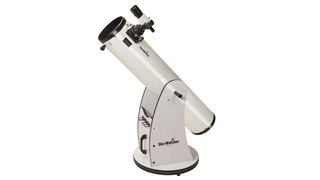
Sky-Watcher Skyliner 200P
Our expert review:
Specifications
Reasons to buy
Reasons to avoid
✅ You want to view galaxies and nebulas This telescope has impressive observing power, allowing you to see deep sky objects in incredible detail.
❌ You want something lightweight: The tube and mount weigh around 50 lbs, so it's not a telescope you can easily pack up and lug to dark sky sites.
❌ You're on a budget: While we've featured it in this beginner's guide, it's not at the cheaper end of the spectrum, so if you're on a budget you'd be better off with one of the more affordable models.
🔎 Sky-Watcher Skyliner 200P While technically very portable, it's actually quite a heavy bit of kit, so it would be a pain to transport anywhere — better suited to the back yard. That said, it'll reward you with incredible views of the night sky in stunning detail. ★★★★
This model is among the most powerful for observations and features a unique design. The Sky-Watcher Skyliner 200P features large tubes that are mounted on alt-azimuth rocker mounts, meaning you won't need to worry about a tripod, and also splits in two — something you barely find in telescope designs. This is because, in spite of immense observing power, Dobsonian telescopes like this are heavy and can be difficult to carry around. This design enhances convenience for extension along trusses or folding into a more compact shape, effectively addressing any portability concerns.
Dobsonian mounts are famous for their capacity to support big aperture telescopes without the expense of tripod setups. The Skyliner 200P, with its 200mm aperture, offers fantastic value by delivering breathtaking views. Its remarkable ability to gather light enables detailed observations of distant galaxies and nebulas. If you've ever dreamed of getting up close to the far corners of the universe, we think this telescope is perfect for you.
But there's one significant downside to the Skyliner 200P: It needs frequent collimation. Collimation is when you adjust the position of the primary and secondary mirrors using small screws. Even a slight bump can throw off this alignment, and having to do it often can be quite annoying. On the flip side, if you like messing around with gadgets, you might find this process enjoyable.
While the Skyliner 200P's large aperture is fantastic, it does raise another point: it's quite heavy. The tube and mount together weigh over 50lbs (22.7kg), meaning it's not a telescope you can easily move around. It's meant to stay in one spot, so if you're searching for something portable for camping or hiking, this isn't the right choice.
The Skyliner 200P comes with two eyepieces — a 10mm (120x) eyepiece for displaying wide fields of view, such as the full moon or entire galaxies, and a 25mm (48x) eyepiece for working in more detail, like on a close-up of the rugged lunar surface or the planets.
- Read our Best eyepieces for telescopes guide to further your skywatching experience
| Attributes | Notes |
|---|---|
| Design | Portable, but heavy. |
| Performance | Excels at gathering light. |
| Functionality | Requires frequent collimation. |
Best for wide field observation
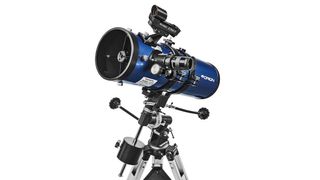
Orion StarBlast II 4.5 EQ
Our expert review:
Specifications
Reasons to buy
Reasons to avoid
✅ You want an EQ mount: The equatorial mount, although tricky to get used to if you're a beginner, will reward you with better tracking.
❌ You don't want a learning curve: remember that helping people quickly identify if a product ISN'T right for them is just as helpful as pointing out the ones that are.
🔎 Orion StarBlast II 4.5 EQ A brilliant all-rounder that offers outstanding value for an extensive piece of equipment. The EQ mount does take some getting used to for beginners, but the initial setup is a breeze. ★★★★
With the Orion StarBlast II 4.5, what more could you want from a telescope at a decent price? This model comes with an equatorial mount — which is different from most starter telescopes that come with a simple alt-azimuth mount. Although it might take a little to learn how to use it, you'll notice much improved tracking performance during your observations once you do get the hang of it.
Setting up the Orion StarBlast II 4.5 is incredibly simple. It's designed to be user-friendly, and if you need guidance, there's a manual included with step-by-step instructions. Everything you need comes in the telescope package: a mount, tripod, optical tube assembly, two eyepieces with magnifications of 18x and 45x (10mm and 25mm), a 2x Barlow lens, a moon map, a red LED light for preserving night vision, a red-dot finder and Orion's Star Target Planisphere and Telescope Observer's Guide to help you plan your observations. We think it's an excellent choice for beginners, especially given its very competitive price.
Although we haven't published a full review, we have had hands-on experience with this telescope. During our stargazing expedition, Jupiter was prominently visible in the southeast, shining brightly with a magnitude of -2.7. The conditions were favorable, allowing us to discern the atmospheric belts and the largest moons of the gas giant. We observed a slight amount of coma, causing images to appear as if they were 'falling inwards' near the edge of the field of view. However, with this telescope, we had to look closely to notice any distortion, and it did not impact our views or our enjoyment of the night sky.
As the telescope is better suited to wide-angle subjects, we turned the tube to the Pleiades (Messier 45), which dazzled in the field of view. The major member stars were pin-sharp, like white jewels. We were also able to spot the Merope Nebula, a reflection nebula surrounding the 4th-magnitude star, Merope.
- Read our Best telescopes for stargazing galaxies and nebulas guide
| Attributes | Notes |
|---|---|
| Design | EQ mount is unusual for beginner telescopes. |
| Performance | Stars are pin sharp, but we did detect a small amount of coma. |
| Functionality | Better suited to wide angle subjects. |
Best computerized telescope



Specifications
Reasons to buy
Reasons to avoid
✅ You want alignment technology: The SkyAlign technology makes aligning your telescope a breeze, all at the touch of a button.
✅ You want something portable: This telescope is lightweight and easy to transport, making it a great option to take on camping trips to dark sky sites.
❌ You don't want technology: This telescope requires the use of its app in order to function, so users looking for a more traditional approach should look elsewhere.
🔎 Celestron AstroFi 102 A basic telescope best suited to lunar and planetary observation. The motorized mount can initially be tricky to set up for beginners, but it comes at a reasonable price for a decent night sky view ★★★½
The Celestron Astro Fi 102 has everything you need when using a telescope as a beginner, including two eyepieces (10mm and 25mm, for magnifications of 132x and 53x), a smartphone adaptor if you fancy your hand at astrophotography and a red dot finder to. Overall, it's a great beginner telescope that's available at a great price thanks to the technology it's packaged up with alongside the great support you get.
Its optics lets you pick out planets with ease and offers good views of the moon. With its four-inch aperture, we also caught nice views of Venus, Mars, Jupiter and Saturn — and a close-up look at our moon's rugged terrain.
There's everything a beginner needs here, including two eyepieces (10mm and 25mm, for magnifications of 132x and 53x), a smartphone adapter in case you want to dabble in astrophotography, and a red dot finder.
It's worth mentioning that the Celestron Astro Fi 102 makes some compromises in build quality to maintain a lower cost and weight. Its outer casing is plastic, which isn't as sturdy as metal-bodied telescopes. However, this doesn't necessarily have to be a dealbreaker. We like how much lighter and easier to transport it is because of this choice. Plus, it's important to handle anything with delicate optics carefully, regardless of the material it's made from.
The Astro Fi 102 features SkyAlign technology, which is straightforward to use and simplifies the alignment process. Alignment is crucial before you begin observing, as it assists the telescope in understanding its position in the night sky. Once aligned, the Astro Fi 102 can automatically direct you to your chosen target when you press a button.
To initiate the alignment process, you use your smartphone as the button. Simply download the Celestron SkyPortal app from the Apple App Store or Google Play to get started.
- Read our full Celestron AstroFi 102 review
| Attributes | Notes |
|---|---|
| Design | Basic plastic casing, tripod needs weighing down. |
| Performance | Seamless syncing with the SkyPortal App. |
| Functionality | Quiet operation and reliable integrated Wi-Fi. |
Best grab and go telescope
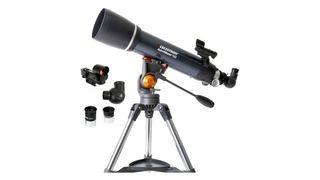
Celestron AstroMaster 102AZ
Our expert review:
Specifications
Reasons to buy
Reasons to avoid
✅ You don't want any distractions: Many users feel distracted or overwhelmed with screens and apps to contend with, but this telescope is a great option for beginners who want to keep things simple.
✅ You want something portable: Our best pick for a grab and go telescope, this model is lightweight and portable enough to travel with it easily.
❌ You want something powerful: Part of the beauty of this telescope is its simplicity, so if you want something with a bit more oomph and more tech, there are better options.
🔎 Celestron AstroMaster 102AZ A great telescope that's perfect for beginners. It's easy to set up and use without any distracting bits of tech. We were impressed by its performance and image quality. ★★★½
This easy-to-use refractor telescope can be put together easily and works without additional technology. It means the Celestron AstroMaster 102AZ is a fantastic option for anybody who wants to get started without any distractions that can take away from some amazing views — including smartphone screens.
We noticed in our Celestron AstroMaster 70AZ review (this is the longer version of that model) that there is no false color. The telescope also connects with a mount that offers smooth movement horizontally and vertically — which means it's easy to scan the night sky. The panning handle on the Celestron AstroMaster 102AZ also lets you track objects or sharpen focus easily, with the mount holding the object in view stably while preventing it from moving out of the field of view slowly.
We observed a waning gibbous moon and were fascinated by the clear view of its crater-covered surface. But, we did notice a slight bluish-purple outline around the moon's edge. This same effect was noticeable when looking at planets like Jupiter and Saturn. However, despite this minor issue, the telescope provided stunning sights of Jupiter's atmospheric stripes and the Cassini Division in Saturn's rings. We could easily ignore this expected optical flaw with this portable refractor.
Like many other of the best telescopes for beginners, you'll find everything you need in the box of the AstroMaster 102AZ. There's a great-quality mount, two eyepieces (10mm and 20mm, offering magnifications of 66x and 33x), a red dot finder, a star diagonal and access to the Starry Night software. The two included eyepieces have enough magnification to see bright celestial objects that bit further away.
You can get a Celestron AstroMaster in different apertures — namely 70mm, 76mm, 80mm, 90mm, 114mm and 130mm — but we've found the Astromaster 102AZ to be beginner- and budget-friendly, and a great choice if you want to observe a wide variety of targets.
- Read our Best telescopes for deep space for alternative deep space friendly models
| Attributes | Notes |
|---|---|
| Design | Easy to assemble. |
| Performance | Good views with very little color fringing. |
| Functionality | Exquisite clarity and contrast. |
Best budget telescope






Specifications
Reasons to buy
Reasons to avoid
✅ You want to look at the moon: If your only interest is getting a closer view of the moon, then this is an inexpensive option that will give you decent lunar views.
❌ You want a telescope that's going to last: Not only did we find this telescope frustrating to use, but we thought some of the parts weren't the best quality, so if you want an instrument that's going to last you for a while, look elsewhere.
🔎 Encalife SVBONY 501P 70 If you're looking for a small and inexpensive telescope so you can look at the moon and not a whole lot else, this model is worth considering. ★★★
If you're new to using telescopes or prioritize simplicity, look no further than the SVBONY 501P 70 refractor telescope. This unit comes with a main telescope tube, a basic 5x24 finderscope and a 45-degree diagonal for comfortable viewing. Put together, it lets you find stars and planets with plenty of ease. You can even carry it around without much stress thanks to the backpack it comes with.
It comes with a single 20mm eyepiece that connects to the 400mm refractor, making it perfect for viewing the moon but not for much else. The tripod (which reaches 41.5-inch / 105cm, or 50-inch / 127cm with the central column extended) is a little on the flimsy side, so that may be an item that'll need upgrading in the future.
Overall, after our Encalife SVBONY 501P 70 review, our verdict was that, for the money, it's a good entry-level telescope for looking at the moon. Keep watch around occasions like Bank Holiday Sales, Prime Day (July) and Black Friday (November) as pricing might change significantly, as with a wide range of Encalife items.
- Read our full Encalife SVBONY 501P 70 review
| Attributes | Notes |
|---|---|
| Design | Lightweight, but cheap price reflects cheap feeling design. |
| Performance | Decent for lunar views but lacks sharpness. |
| Functionality | Lacks versatility. |
Best telescopes for beginners: Frequently Asked Questions
When deciding on the best beginner telescope for yourself or the budding astronomer you're buying for, you'll need to consider what to look for if you want to achieve the best stargazing or skywatching experience.
It's important to take into account the various features and capabilities of the different telescope models, as well as any budget constraints you have when making your decision — set a budget and stick to it so you don't overspend.
You also need to consider the portability of the scope if you plan on using your scope in different locations, not all of them are simple to transport.
What types of beginner telescope are there?
There are three main types of beginner telescopes: Reflector, refractor and catadioptric, all more or less suitable depending on the desired night sky subjects. Typically, reflectors are better for viewing faint, deep-sky objects like nebulae and galaxies, whereas refractors are popular for observing objects like planets or moons. Catadioptric telescopes can give you the best of both worlds and can be a happy middle ground.
As the name suggests, refractors bend the light and typically work similarly to camera lenses, whereby light passes through a series of glass elements before resolving toward the eyepiece.
Reflectors use a primary mirror to capture light from the telescope tube, then a secondary mirror to reflect the light into the eyepiece. These types of telescopes are often less expensive to build since they require the creation of a single large mirror instead of the multiple glass elements you'd find in refractors.
Catadioptrics combine refractive and reflective technology, allowing for long focal lengths and wide apertures in smaller telescope bodies.
What is the cheapest beginner telescope?
In this guide, the least expensive beginner telescope we've reviewed is the Encalife SVBONY 501P 70, which is available for around $89.99 at the time of writing. However, it should be noted that while we gave it three out of five stars, it's not the best at anything in particular and we'd only recommend it for lunar viewing.
If you'd prefer something budget-friendly that can do a little more, then take a look at the Celestron AstroMaster 102AZ telescope.
Which is the best beginner telescope for astrophotography?
Undoubtedly, that would be the Unistellar eQuinox 2 telescope which is a smart telescope that automatically orients itself and can image straight from the Unistellar app on your smart device. However, it may be out of budget for many.
If that's the case for you, then take a look at the Celestron Inspire 100AZ which we'd recommend for astrophotography. You will need a camera and an adapter though. Discover What equipment do you need to see and photograph the planets with our handy guide.
What's the best beginner telescope for a child?
The Celestron Inspire 80AZ is the best beginner telescope for kids because it offers more over most beginner packages and it's easy to assemble. Want to browse the very best models? We have an entire buying guide dedicated to the best telescopes for kids.
What do the telescope terms mean?
Here are some basic terms you may want to familiarize yourself with before you make a purchase:
Aperture: The diameter of the primary mirror or lens that allows the telescope to collect light.
Field of view: Area of sky visible through the eyepiece.
Focal length: A telescope's tube length. Short focal lengths offer a wide field of view and a small image.
Focal ratio: Also known as the telescope's speed. Small focal ratios provide lower magnifications, a wide field of view, and a brighter image.
Magnification: Relationship between the telescope's optical system and the eyepiece.
Which beginner telescopes comes with a phone mount?
The Celestron Inspire 100AZ has a phone mount that ships with the telescope as well as other accessories you'll need to get started. But increasingly there are many models that ship with phone mounts. Either to hold while you use one of the best stargazing apps, to manually guide you while you navigate the stars, and some phones use apps that control the telescope electronically. Take a look at the models above to decide which you want or need.
How we test the best telescopes for beginners
To guarantee you're getting honest, up-to-date recommendations on the best telescopes to buy here at Space.com we make sure to put every telescope through a rigorous review to fully test each instrument. Each telescope is reviewed based on many aspects, from its construction and design, to how well it functions as an optical instrument and its performance in the field.
Each telescope is carefully tested by either our expert staff or knowledgeable freelance contributors who know their subject areas in depth. This ensures fair reviewing is backed by personal, hands-on experience with each telescope and is judged based on its price point, class, and destined use. For example, comparing a 10-inch Dobsonian to a 2.76-inch refractor wouldn't be appropriate, though each telescope might be the best pick in its own class.
We look at how easy it is to set up, whether computerized or motorized mounts are reliable and quiet and if a telescope comes with appropriate eyepieces and tripods. We also suggest if a particular telescope would benefit from any additional kit to give you the best experience possible.
With complete editorial independence, Space.com are here to ensure you get the best buying advice on telescopes, whether you should purchase an instrument or not, making our buying guides and reviews reliable and transparent.
If you're curious to see what the best telescopes are, we've got a guide for that. Similarly, if you already know what brand of telescope you want to purchase, we've got you covered there too. Be sure to check out our brand-specific guides for Celestron, Meade Instruments, Orion and Sky-Watcher.
Join our Space Forums to keep talking space on the latest missions, night sky and more! And if you have a news tip, correction or comment, let us know at: community@space.com.
Get the Space.com Newsletter
Breaking space news, the latest updates on rocket launches, skywatching events and more!

Gemma currently works for the European Space Agency on content, communications and outreach, and was formerly the content director of Space.com, Live Science, science and space magazines How It Works and All About Space, history magazines All About History and History of War as well as Science, Technology, Engineering, Arts and Mathematics (STEAM) kids education brand Future Genius. She is the author of several books including "Quantum Physics in Minutes", "Haynes Owners’ Workshop Manual to the Large Hadron Collider" and "Haynes Owners’ Workshop Manual to the Milky Way". She holds a degree in physical sciences, a Master’s in astrophysics and a PhD in computational astrophysics. She was elected as a fellow of the Royal Astronomical Society in 2011. Previously, she worked for Nature's journal, Scientific Reports, and created scientific industry reports for the Institute of Physics and the British Antarctic Survey. She has covered stories and features for publications such as Physics World, Astronomy Now and Astrobiology Magazine.
- Jase Parnell-BrookesChannel Editor
- Kimberley LaneContributing writer
- Kimberley SnaithFreelance contributor